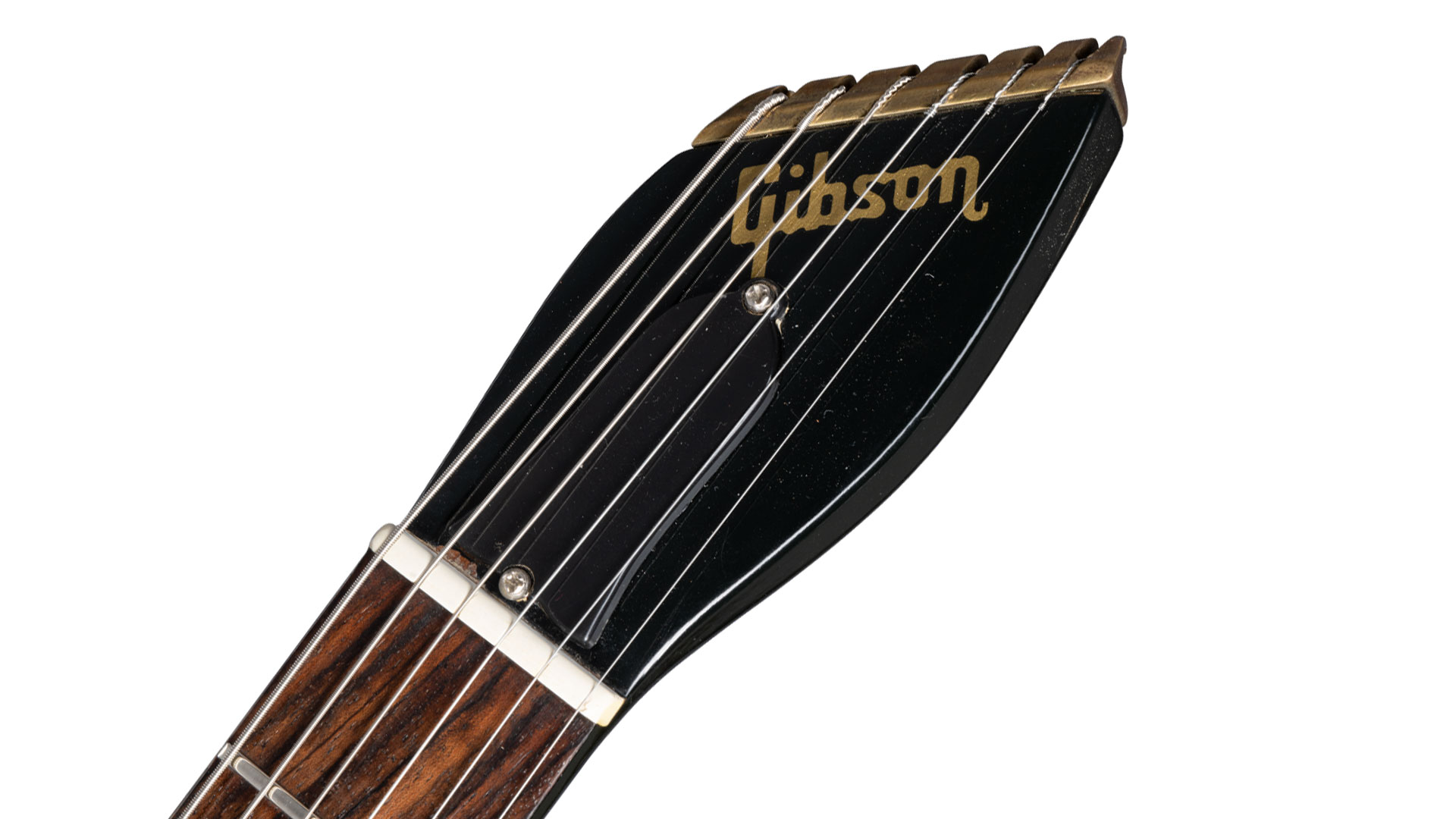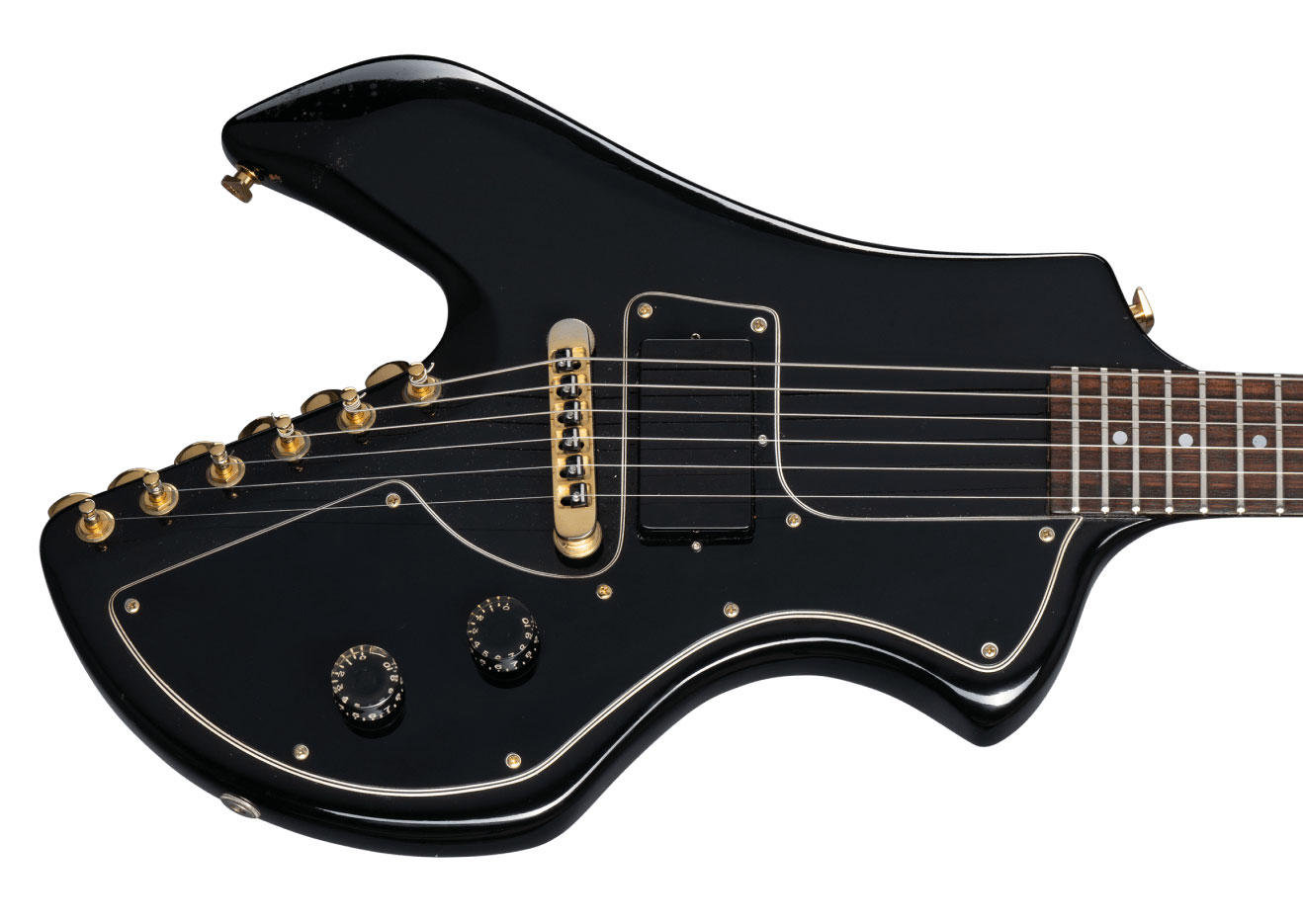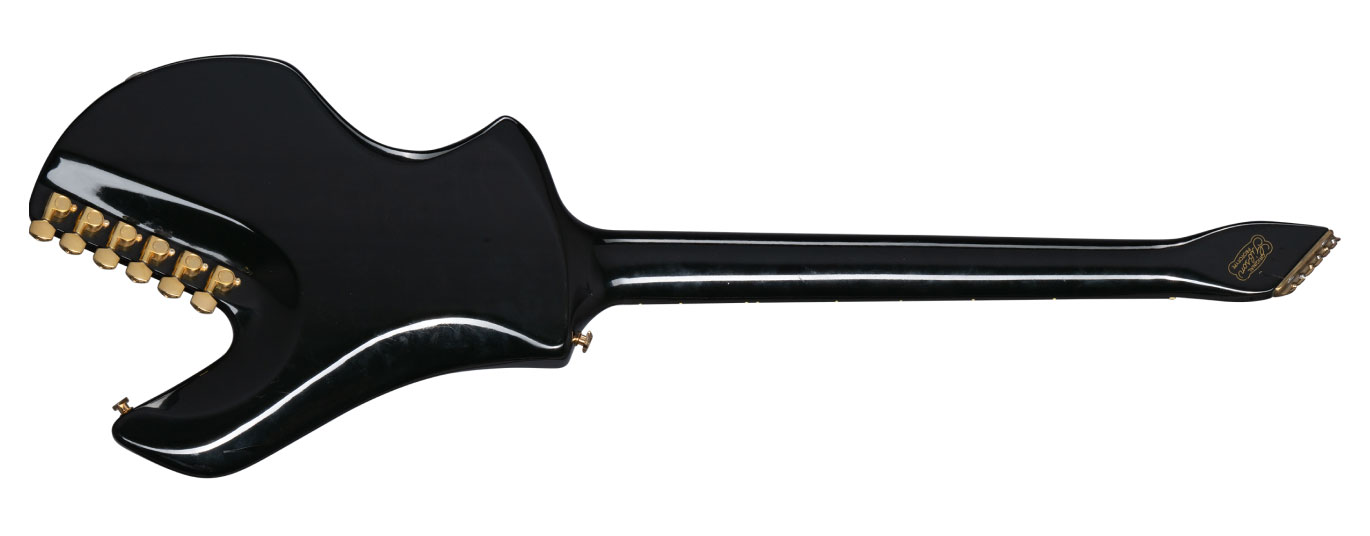“The only headless guitar Gibson has ever produced” actually has a headstock – the 1981 Futura Prototype must be the most intriguing design in the firm’s history
Deemed too weird even for the ’80s guitar buyer market, this ultra-rare prototype is one of only a few ever produced – and it just sold for big money

Gibson’s recent Certified Vintage batch contained a real rarity from the firm’s past in the form of a 1981 Futura prototype – supposedly, the only headless guitar the brand ever made.
If you’re not familiar with it, Gibson’s Certified Vintage program is essentially the firm’s way of clearing out the store cupboards – selling off instruments its collected for documentation/reissue purposes, prototypes and anything that’s been hanging around the building for a long time.
This 1981 Futura Prototype arrived in the latest batch and was highlighted by the internet’s most eagle-eyed guitar guru, Austin of The Trogly’s Guitar Show over on his YouTube – so full credit to him for the spot.

The single-pickup model features a solid alder body, maple SlimTaper neck with rosewood fingerboard and an Alnico V humbucker, with late ’70s CTS volume and tone pots.
That part of the spec list is relatively straightforward and bears resemblance to the firm’s regular Futura design of the period, and its other ’80 oddity, the bolt-on neck Corvus.
Where things get a little more interesting is how the firm approached the headless concept. First and most obvious: the familiar Gibson Deluxe Tuners are located (very unfamiliarly) on the tail.

This appears to confirm a long-held rumor that the ultimately unsuccessful Corvus and Futura body shape was initially developed with the tail cut-out because it was intended to be headless – only for Gibson to get cold feet and revert to a more traditional headstock.
Get The Pick Newsletter
All the latest guitar news, interviews, lessons, reviews, deals and more, direct to your inbox!
(As Trogly puts it: “Marketing said, ‘Hey, this thing needs a headstock. We cannot market a guitar like this.’”)
The second and perhaps most intriguing quirk of what the firm itself dubs as “the only headless guitar Gibson has ever produced” is that it arguably does have a headstock.
Look at the head end and you’ll see a strange combination of a brass tailpiece and a regular nut and truss rod cover, all mounted on a reduced headstock that (to our eyes) comes across as a clumsier take on the Vox Teardrop shape.
“The only reason we have this,” Trogly speculates, “is probably because they're like, ‘Well, how are we gonna adjust the truss rod?’ [And] they didn't want to mess with having a Fender style wheel down [at the body end].”
While it’s not the most elegant execution of the headless concept (because, you know, it has a headstock), there are some features that point to Gibson’s more typical craftsmanship.
Flipping the 1981 Futura Prototype over shows just how much it differs from the boxier models that eventually hit the market – with a beautiful comfort carve and a tapered tail to accommodate the tuners.
The design makes a lot more sense when you see it with the tuning pegs attached, too. Look at the rear profile below and the tuners appear to, quite literally, give it some teeth.
Indeed, seeing it in this light, you start to think that perhaps it was influenced by Ridley Scott’s iconic Alien, which premiered a few years prior in 1981.

The Corvus and Futura builds that eventually arrived a few years later look to have used the same outline for the body, but not bothered with the same level of carving, as they no longer needed to taper the tail end to the same degree in order to accommodate the tuners.
Ultimately, we can see why it didn’t hit the market in this form (again: it was a headless guitar with a headstock – and an ugly one at that). However, it’s a really interesting look at the firm’s thought processes during the early-’80s and we love that Gibson has put it out there.
We’re not the only ones that think so either, as Trogly points out – somebody paid a massive $24,000 to purchase this example from Gibson…
Trogly has plans to one day open a guitar museum, and Gibson oddities are something of a special obsession for him. Indeed, he recently found and purchased the legendary Gibson map guitar used in the ‘American-made, world-played’ campaign.

Matt is Deputy Editor for GuitarWorld.com. Before that he spent 10 years as a freelance music journalist, interviewing artists for the likes of Total Guitar, Guitarist, Guitar World, MusicRadar, NME.com, DJ Mag and Electronic Sound. In 2020, he launched CreativeMoney.co.uk, which aims to share the ideas that make creative lifestyles more sustainable. He plays guitar, but should not be allowed near your delay pedals.
“What blew me away was that everyone wanted the curly maple top. People were calling, saying, ‘I’ve got to have the bird inlays’”: Paul Reed Smith on raising the Standard 24, finally cracking the noise-free guitar and why John Sykes is a tone hero
“It combines unique aesthetics with modern playability and impressive tone, creating a Firebird unlike any I’ve had the pleasure of playing before”: Gibson Firebird Platypus review










